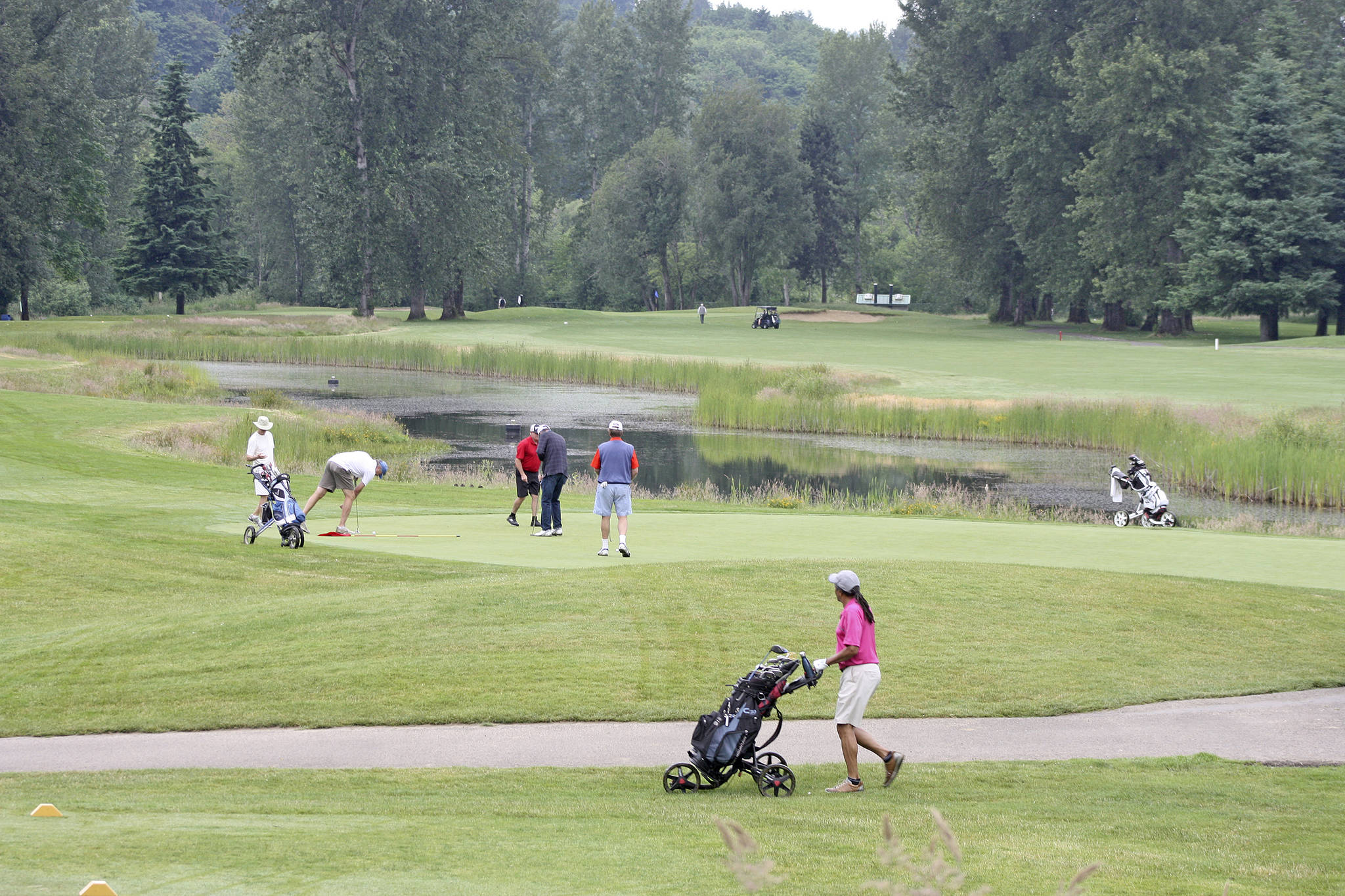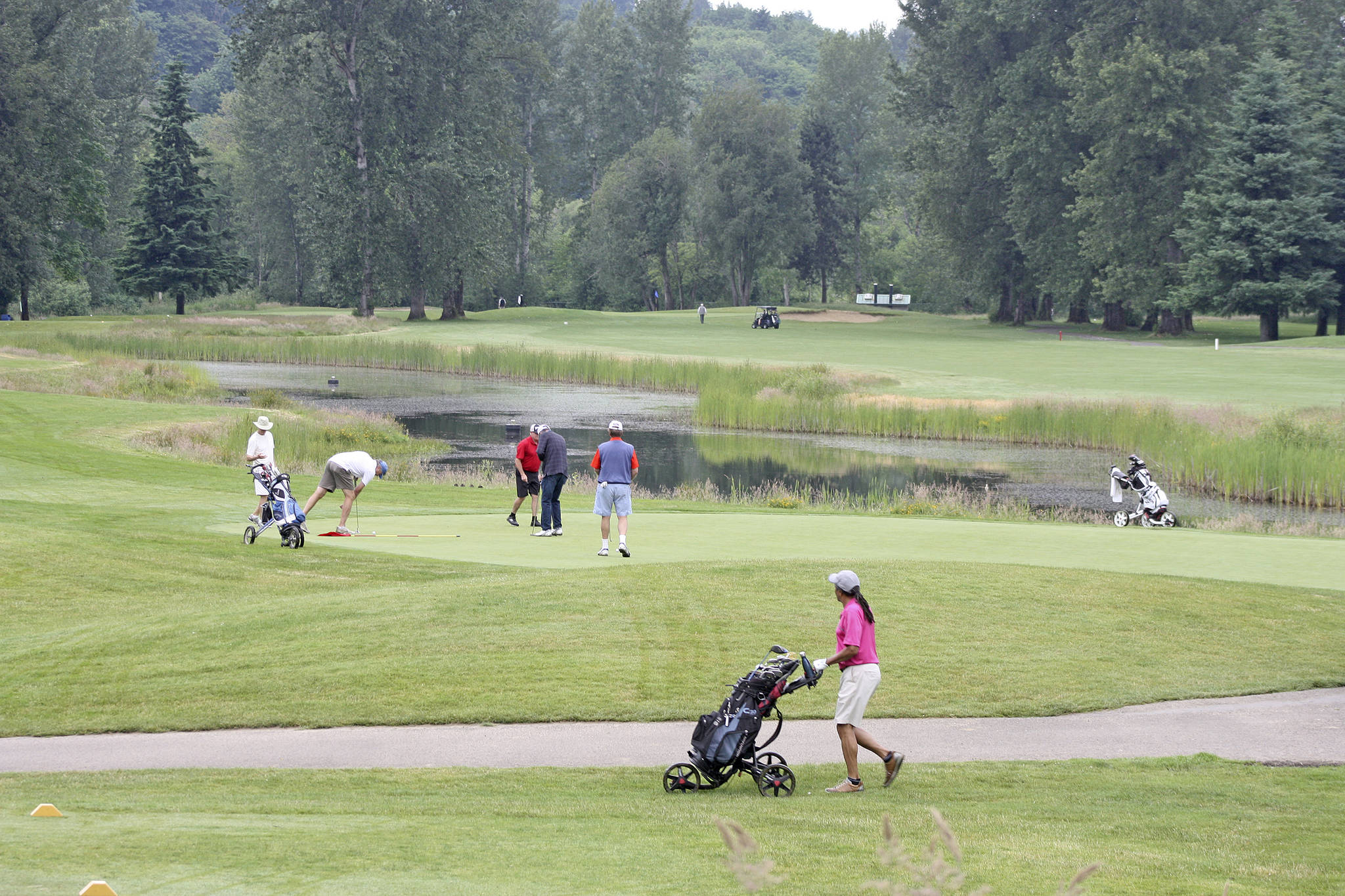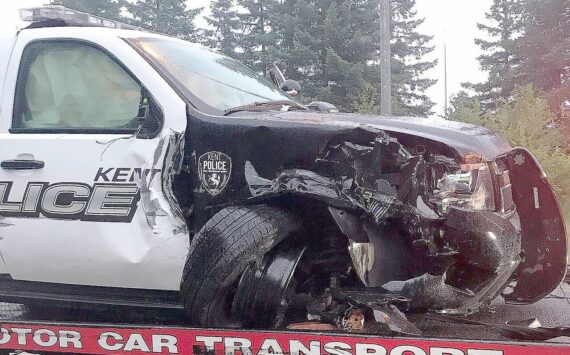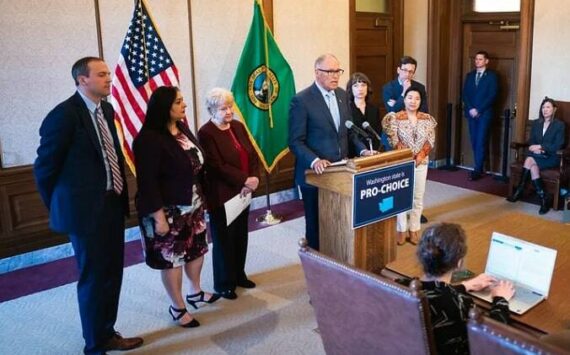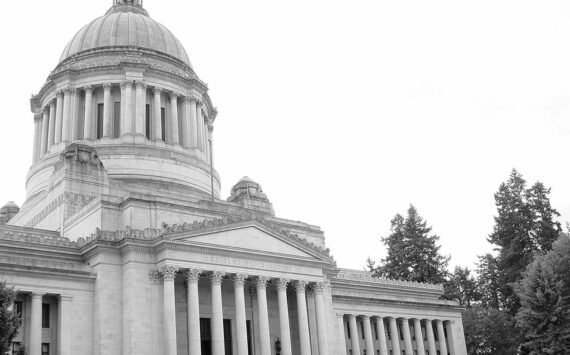Washington state’s phased reopening gets formally under way Tuesday, May 5 — although it may be June 1 before hair salons and barber shops can operate and eating in a restaurant is possible.
And it will be Independence Day, at the earliest, before this whole unwinding of a statewide stay-home order is done.
“We think it’s a balanced, cautious data-driven approach,” David Postman, chief of staff to Gov. Jay Inslee, said of the plan dubbed ‘Safe Start Washington.’ “I say cautious. That’s what these times demand.”
Inslee outlined each of four planned phases Friday when he also extended his stay-home order through May 31.
Tuesday marks the first day of Phase 1. Golfers can get back on their favorite course, hikers can trek through state parks and hunting and fishing are possible again. Many construction workers are on job sites again, too.
In a matter of days, auto dealers could welcome customers and retailers could complete curbside sales as the state undertakes the staged restart of public life and an economy put largely on hold since mid-March to blunt the spread of coronavirus responsible for the deadly COVID-19.
Inslee released an update of his plan Monday. It had minimal changes, the most notable being that professional sporting events without audience could be allowed in the third phase, which could start in mid- to late June.
Postman and other members of the Inslee administration offered further details in an afternoon briefing for reporters.
The second phase — in which hair salons can operate and limited restaurant dining is possible — would come no sooner than June 1. There will be at least three weeks between subsequent phases, meaning stay-home restrictions won’t be fully lifted until at least early July.
But a spike in cases, hospitalizations or deaths could cause the governor to renew restrictions at any point, officials repeatedly said Monday. Data show that social distancing is working in the state’s fight against the novel coronavirus, but it’s too early to ease restrictions, they said.
Fully reopening the state will require widespread testing and contact tracing — determining who has come in contact with infected people so they can self-quarantine. The state is counting on receiving materials for a half-a-million test kits this month and having 1,500 trained contact tracers deployed by May 11.
“We can’t risk losing our progress. We really want to see this through to where we have this safe start” so the sacrifices that people have made won’t have to be made again, said John Weisman, secretary of the Department of Health.
Statewide, there were 15,462 confirmed cases as of Monday, with at least 841 deaths, the state Department of Health said.
Under Phase 1, retail stores will be allowed to offer curbside pickup. Additionally, restrictions will loosen for landscaping, auto, boat and recreational vehicle sales, and pet walking businesses. And drive-in worship services with a limit of one household per vehicle are allowed.
However, businesses in each of those sectors cannot start up immediately. They must wait until guidance specific to their industry is published by the governor’s office. In some cases, that should be done in a matter of days, officials said. This will be the process for each sector in each future stage.
In Phase 2, restaurants can open at 50% dine-in capacity with no more than five people at a single table; retail stores, hair and nail salons, barber shops and housecleaning can reopen; manufacturing and new construction can restart, and camping and gatherings with no more than five people outside a household per week will be allowed.
The third phase will allow recreational sports with five to 50 people, gatherings of fewer than 50 people, all non-essential travel and open facilities like public pools, libraries and museums. Restaurants could operate at 75% dine-in capacity, bars at 25% and indoor gyms and movie theaters at 50%. Professional sporting events without a crowd are allowable in this phase.
In the final stage, the limit on crowd size will be lifted, enabling nightclubs and concert venues to reopen, restaurants to operate at full seating capacity, and major sporting events to be held with fans. It still encourages social distancing for those most vulnerable to the disease.
Another element of the staged approach will allow counties with a population of less than 75,000 that have not identified a resident with COVID-19 for the past three weeks to seek a variance to move to Phase 2 before the rest of the state. Up to 10 counties could apply.
Postman acknowledged there a lot of people unhappy that they can’t reopen their businesses sooner.
“We hear from those folks every day,” he said. “Everybody would like to move up, we understand that.”
Some people are not waiting.
This past weekend customers lined up for a hair cut at a Snohomish barber who violated the stay-home order with a very public act of civil disobedience. The Department of Licensing will be notifying the owner to make sure they understand the potential consequence which include a suspension or loss of license.
“The message to that business and other businesses is don’t do this. You could get people sick,” Postman said, adding some who get infected could die.
